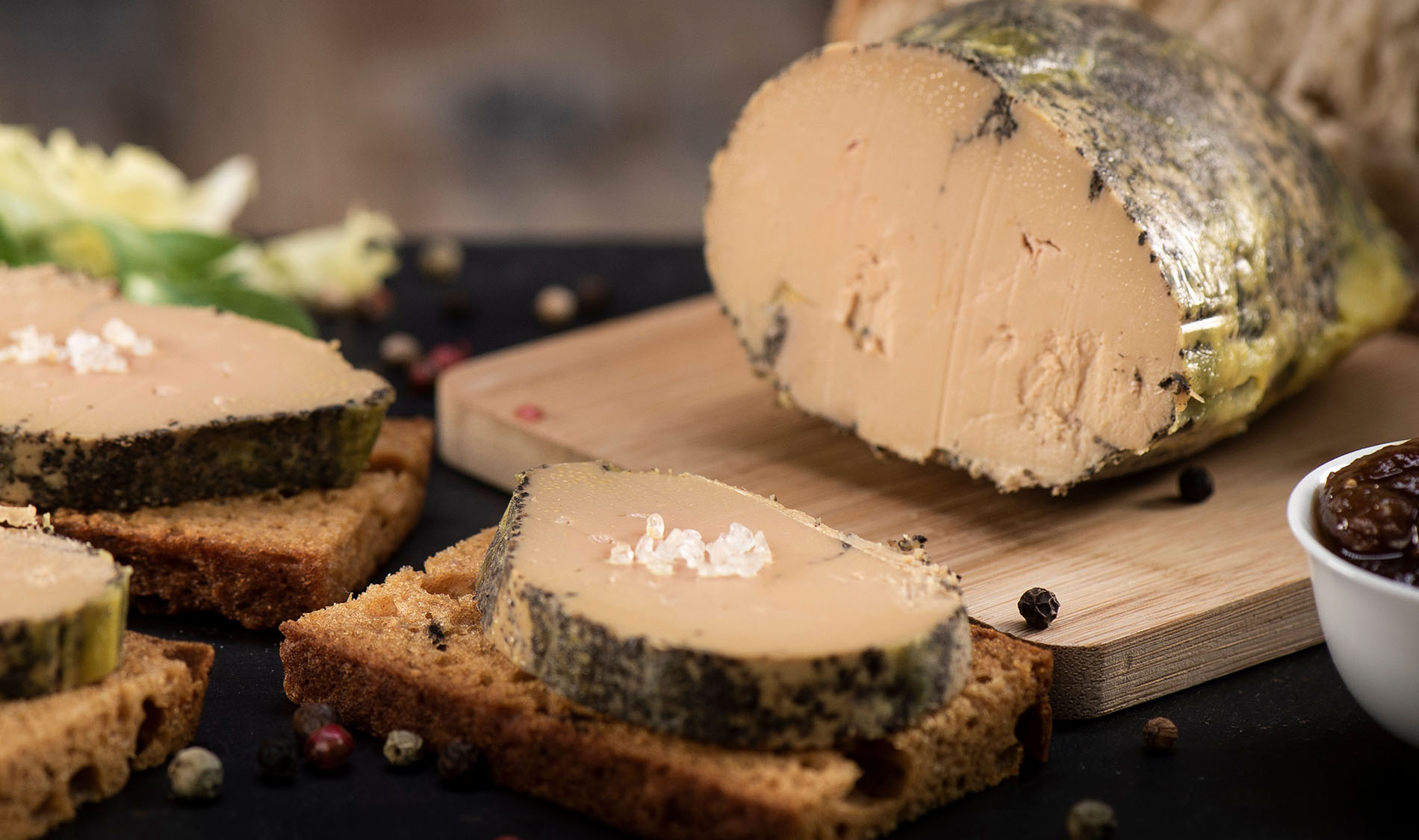FOIE GRAS
ORIGINS - REGIONS
A product of luxury and fine-eating, the undisputed symbol of French gastronomy, foie gras is the essential companion of our celebrations and special meals. And because it spans culinary fashions without batting an eyelid, we sometimes forget its millenary history.
FEATURES
Geese at the foot of the pyramids
A fresco shows us that 4,500 years ago already, the Egyptians were cramming geese. After them, the Romans followed by the Israelites spread the practice and its pleasures throughout Europe. From the seventeenth century France, especially the southwest, became the undisputed specialist of this preparation. And France is still the largest producer and the consumer of foie gras.
FLAVORS, PREPARATIONS
Using duck increased the recipes
95% of the time, foie gras is made with duck liver. It is a noble product, made very simply. No trick is needed – nor indeed is fine enough – to improve it. Often eaten cold, it can be fully or gently cooked and is sold in blocks, as a terrine with or without pieces, and also as a mousse. It is happiest accompanied by a fresh fig or a confit. It can, under the whip of a chef, be used to bind wonderful sauces or be seared gently or garnish a sealed, rare fillet, the pride of master Rossini.
Foie gras is mostly eaten cold, as a starter, but sometimes hot, fried. It is most often accompanied by a sweet wine, and more rarely by red wine (especially in the southwest). Figs also go very well with foie gras and bring out its flavors.
